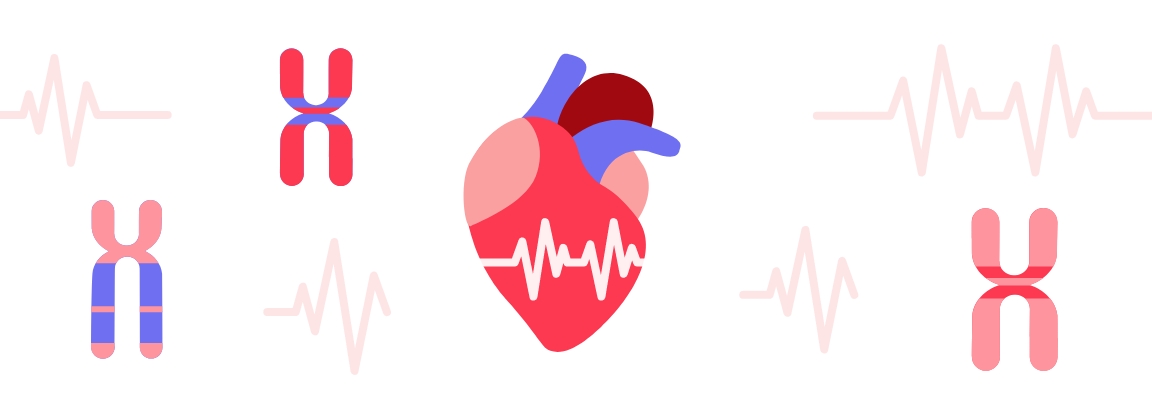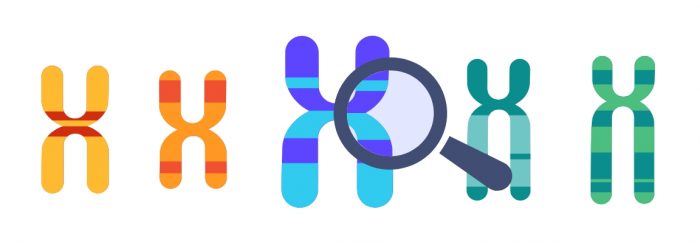Do you notice that your heart beats out of time, that you are short of breath, that your breathing is rapid? Maybe you are in love. Or maybe you have congenital heart disease.
Interestingly, these cardiovascular diseases don’t cause chest pain, so if you are in pain, yes, it could be love.
Congenital heart disease or congenital heart disease is a group of diseases characterised by several common features:
- They are disorders of the heart. The name gave clues. This includes the walls of the heart, the heart valves and the large blood vessels leading to and from the organ.
- These alterations are structural and modify the functioning of the heart.
- They occur during the development of the embryo and are already present at the birth of the individual.
The physical structure of the heart is quite simple. Imagine a box with four chambers, the two at the top are the atria and the two at the bottom, which are larger, are the ventricles. One wall, called the septum, separates the two atria, and another separates the two ventricles.
The pathway is also simple. Blood, with less oxygen than a sedentary person in a gym, enters the right atrium of the heart via a vein. From there it is sent to the right ventricle, which sends it to the lung to remove carbon dioxide and oxygenate. It returns to the heart, specifically to the left atrium, from there it goes to the left ventricle, which finally sends the oxygenated blood to the rest of the body.
To prevent the blood from becoming original and moving backwards (i.e. from ventricles to atria), there are a series of valves that open and close to control its passage.
Imagine that while the embryo’s heart is developing, a problem arises that causes a malformation in its structure. We then have congenital heart disease.
Within this group of cardiovascular diseases, the severity is very different. From individuals who have no symptoms at all, to those who die before birth. Likewise, the treatment is different. Mild cases do not require any treatment, while more severe cases may require several operations or even a heart transplant.

About genes and hearts
These diseases may be due to genetic or environmental causes, or both, with the majority being due to genetic mutations alone. It is estimated that there may be approximately 400 genes related to congenital heart disease, a risk factor being that one of the parents or siblings has the disease. In many cases the heart disease is not an isolated trait, but is part of a larger syndrome. About 30% of babies with chromosomal abnormalities also have congenital heart disease.
Let us look at dilated cardiomyopathies. This disease accounts for more than half of all heart transplants in patients aged 1 to 10 years. The left ventricle is dilated, with a weakened and thin heart muscle that does not pump blood efficiently. It is a disease with a 20/30% inheritance pattern. It is often due to an autosomal dominant gene (only one gene for the disease is enough to have the disease), as in dilated cardiomyopathy 1A, due to a mutation in the LMNA gene, which encodes lamin A/C.
Familial hypertrophic cardiomyopathy is another congenital heart disease with autosomal dominant inheritance. In contrast to the previous one, here we have a thickening of the heart muscle. The thickening hinders the outflow of blood from the heart and sometimes causes problems with its relaxation and filling. In men the expression of the disease tends to be more severe.
Even so, environmental causes cannot be ruled out. Alcohol consumption, diabetes or hypoxia are risk factors. A positive correlation has been found between maternal obesity and the risk of congenital heart disease in the embryo.
With so many types, it is no wonder that in 2015 there were 48.9 million people affected worldwide. It is considered the most common congenital disease and the leading cause of death related to birth defects, accounting for 30% of them.
It is also no wonder that to facilitate its study, it has been classified into two groups.
Non-cyanotic heart disease: you’re still pink
These are the most common, with bicuspid aortic valve malformation (in healthy people it is formed by three leaflets instead of two) being the most common congenital heart disease.
They are so called because blood oxygenation levels are not compromised, at least in the early stages of life. In turn, this group has an additional classification.
- Obstructive lesions. These are malformations that make it difficult for blood to pass through the heart. They rarely occur in isolation and are often associated with other lesions or diseases. An additional problem is that, to compensate for the reduced blood flow, the area before the blockage becomes larger and the heart becomes hypertrophied. The common example is pulmonary valve stenosis, where the valve that allows passage from the heart to the lungs narrows and blood flow is reduced. This problem accounts for 7-9% of all congenital heart diseases.
- Shunt lesions. The heart is designed so that oxygenated and deoxygenated blood follow different routes. When the two types of blood mix, we have shunt lesions. In these lesions, blood passes from the left side back to the right, which hypertrophies the right side and increases the pressure in the lungs.
Cyanotic heart disease: you turn blue.
And this is not a metaphorical way of speaking. Individuals suffering from cyanotic heart disease have low blood oxygen levels, causing their skin and mucous membranes to have a bluish tint. The severity of cyanotic is much higher than that of acyanotic, being an emergency in neonates and sometimes requiring rapid surgery.
This occurs for example in shunt lesions where the blood passes from the right to the left side, causing the heart to pump mixed oxygenated and deoxygenated blood to the rest of the body.
Have you ever been told you have a heart so big it doesn’t fit in your chest? If you’re worried about it being literal and seeing other genetic diseases, the tellmeGen DNA kit can give you clues.



